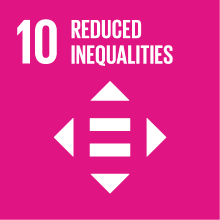DEAF CULTURE 2 MOD. 1
- Academic year
- 2020/2021 Syllabus of previous years
- Official course title
- CULTURA DEI SORDI 2 MOD. 1
- Course code
- LT2650 (AF:310865 AR:176230)
- Teaching language
- Italian
- Modality
- On campus classes
- ECTS credits
- 6 out of 12 of DEAF CULTURE 2
- Degree level
- Bachelor's Degree Programme
- Academic Discipline
- L-LIN/01
- Period
- 1st Semester
- Course year
- 2
- Where
- VENEZIA
- Moodle
- Go to Moodle page
Contribution of the course to the overall degree programme goals
The aim of the course is to deepen the knowledge of the Italian Deaf culture and community through interaction within the community.
The course aims to encourage the students to activate their observational skills and to promote their curiosity and their participation in the many cultural and artistic experiences of the Deaf Community.
Expected learning outcomes
The student knows the methodological bases of the socio-anthropological qualitative research and knows how to adapt them to the specific characteristics of the Deaf Culture and Sign Language.
The student knows the history of the Education of the Deaf and the organization of the Deaf Community by identifing the historical and social components through the testimonies of those who live in it.
The student recognizes the various cultural and sociolinguistic peculiarities observing the differents artistic expressions of the Deaf Community
2. Applying knowledge and understanding
The student is able to apply the methodological knowledge gained during the course, to the expected group research activities.
The student is able to apply the acquired cultural and sociolinguistic knowledge while meeting the Deaf community and in the interaction of peers and teachers.
3. Making judgements:
The student will be able to analyze the social and cultural components of Deafness, starting from the life stories of community members and people who interact with the Community, activating a critical reflection and elaboration of contemporary events.
4. Communication skills:
The student is able to analyze and expose with appropriate terminology and critical arguments, the main events of the Deaf Community at a local and international level, through the interviews with members of the Community.
The studenti is able to argument critically and respectfully with the peers and the teacher.
5. Learning skills:
The student is able to take notes.
The student is able to consult the references in the syllabus and related articles and search for new electronic resources related to the Deaf Culture.
The student is able to apply these skills to subsequent studies to stay up to date and connected to the Deaf community
Pre-requirements
Contents
• The Deaf Community as a linguistic minority and the right to use and promote the Italian Sign Language
• Metodologocial bases ot the reasearch in the scio anthropological domain
• Legislative references of the Deaf Community
• The concept of Audism within and outside the Deaf
• Collective identity and Deaf Identity
• The definition of Deaf Culture starting from the concept of Deafhood and Deaf Gain
• The struggles for the emancipation of the national and international Deaf community
• At the edge of the Deaf community: CODAs – Children of Deaf Adults
• Professionals working with the Deaf Community in the educational settings
• Analysis of the different artistic expressions typical of the national and international Deaf Communities like visual arts, poetry, storytelling, theater and movies.
Referral texts
- Marziale B., Volterra V. (a cura di), Lingua dei segni, società e diritti, Roma: Carocci editore, 2016 cap. 4-5-6
- Sacks O., Vedere voci, Milano: Adelphi, 1990 ed edizioni seguenti. - III parte
- Russo Cardona T., Volterra V. (a cura di), Le lingue dei segni. Storia e Semiotica, cap. 5.
One choice between:
x Grazioso C., Diversa figlia di diversi, , Napoli, Lettere Diverse, 1999.
x Poulain V., Un diverso sentire, Milano, Corbaccio, 2015
x Cecchinelli T. "Peccato, io non sono sorda" Erga Edizioni - 2019
- Palazzo D., Il mio cammino verso la comunità sorda", Bari: La Matrice, 2014.
- Cortometraggio "A silent child"
- Film "Nel paese dei sordi" di Nicolas Philibert, 1992, (https://www.youtube.com/watch?time_continue=1252&v=HkQ6D8fQoO8&feature=emb_logo )
Other articles and material will be available online.
ADDITIONAL TEXTS FOR NON-ATTENDING STUDENTS
- Wirth R. con Ruggeri C., Il silenzio è stato il mio primo compagno di giochi. La mia storia vera., Newton Compton, 2015.
- Milani G., "Sordo troppo presto", Pluriversum Edizioni, 2018.
Assessment methods
The final score will be composed for 1/2 by the result of the group work and for 1/2 by the result of the oral part.
Type of exam
Teaching methods
2030 Agenda for Sustainable Development Goals
This subject deals with topics related to the macro-area "Poverty and inequalities" and contributes to the achievement of one or more goals of U. N. Agenda for Sustainable Development




